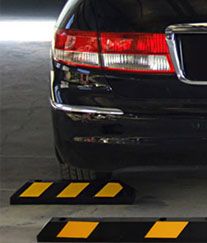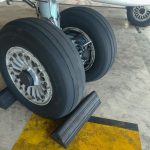Definition of speed bumps
Speed bumps, also known as speed humps or speed breakers, are traffic calming devices designed to reduce the speed of vehicles. They are typically raised sections of pavement that force drivers to slow down as they pass over them. Speed bumps are commonly used in residential areas, school zones, and parking lots to improve safety by discouraging speeding. These physical obstacles create a jarring sensation when vehicles drive over them, reminding drivers to adhere to the designated speed limit. By implementing speed bumps, communities can effectively control the flow of traffic and create a safer environment for pedestrians and motorists alike.
Purpose of speed bumps
Speed bumps are traffic calming devices that are strategically placed on roads to slow down vehicles. The purpose of speed bumps is to enhance safety by reducing the speed of vehicles, especially in areas where there is a high risk of accidents or where pedestrians are present. By forcing drivers to slow down, speed bumps help to prevent reckless driving and encourage responsible behavior on the road. Additionally, speed bumps can also be used to control traffic flow and discourage excessive speeding, making them an effective tool for maintaining order and promoting safer road conditions.
Importance of slowing down vehicles
Slowing down vehicles is of utmost importance for ensuring road safety and preventing accidents. Speed bumps play a crucial role in achieving this objective. They are designed to reduce the speed of vehicles by creating a physical barrier on the road. By forcing drivers to slow down, speed bumps help in minimizing the risk of collisions and providing a safer environment for pedestrians and other road users. Additionally, speed bumps also serve as a visual reminder for drivers to adhere to the speed limit, promoting responsible and cautious driving. Overall, the presence of speed bumps is essential in maintaining order and safety on our roads.
Types of Speed Bumps
Traditional speed bumps
Traditional speed bumps for asphalt have been used for many years as a means to slow down vehicles in various settings. These raised structures are typically made of asphalt or concrete and are strategically placed on roads, parking lots, and other areas where speed reduction is necessary. When drivers encounter a speed bump, they are forced to slow down significantly in order to navigate over the raised surface. This not only helps to reduce the overall speed of vehicles, but also increases safety for pedestrians and other road users. Despite their effectiveness, traditional speed bumps have some drawbacks, such as causing discomfort to passengers and potentially damaging vehicles if not approached with caution.
Speed humps
Speed humps are an effective traffic calming measure that can help reduce vehicle speeds in residential areas and other locations where speed control is necessary. These raised platforms, typically made of asphalt or concrete, are strategically placed along roadways to force drivers to slow down. By creating a physical barrier, speed humps encourage motorists to drive at a safer speed, improving overall road safety. Additionally, speed humps can also help to deter excessive speeding and reckless driving, making them a valuable tool in promoting a more peaceful and secure environment for pedestrians and residents alike.
Speed cushions
Speed cushions are an effective traffic calming measure that has gained popularity in recent years. These raised platforms, typically made of rubber or concrete, are strategically placed on roadways to slow down vehicles without causing discomfort to drivers. Unlike traditional speed bumps, speed cushions are designed with gaps in between, allowing larger vehicles, such as buses and emergency vehicles, to straddle them without any inconvenience. This makes speed cushions a versatile solution for controlling speed in residential areas, school zones, and other areas where traffic calming is necessary. By encouraging drivers to reduce their speed, speed cushions contribute to safer roads and help prevent accidents and injuries.
Benefits of Speed Bumps
Reduced vehicle speed
Reduced vehicle speed is one of the key benefits of implementing speed bumps. These traffic calming devices are strategically placed on roads to force drivers to slow down, promoting safer driving habits. By creating a physical barrier that interrupts the smooth flow of traffic, speed bumps effectively reduce the speed at which vehicles can travel. This not only helps to prevent accidents but also enhances pedestrian safety, making it easier for people to cross the road without the fear of fast-moving vehicles. Additionally, reduced vehicle speed can contribute to a quieter and more peaceful neighborhood, as the noise generated by speeding vehicles is significantly reduced. Overall, speed bumps play a crucial role in creating a safer and more livable environment for both drivers and pedestrians.
Improved pedestrian safety
Improved pedestrian safety is a crucial aspect of urban planning and traffic management. Speed bumps have emerged as a perfect solution for slowing down vehicles and ensuring the safety of pedestrians. These raised platforms, strategically placed on roads, compel drivers to reduce their speed, making it safer for pedestrians to cross the street. By forcing drivers to slow down, speed bumps significantly reduce the risk of accidents and promote a more pedestrian-friendly environment. Additionally, speed bumps serve as a visual reminder for drivers to be cautious and attentive while navigating through residential areas, school zones, and other pedestrian-heavy locations. With their simple yet effective design, speed bumps have proven to be an effective tool in enhancing pedestrian safety and creating safer communities.
Decreased accidents and injuries
Decreased accidents and injuries are one of the key benefits of implementing speed bumps on roads. These traffic calming measures have proven to be highly effective in reducing the speed of vehicles, thereby minimizing the risk of accidents. By forcing drivers to slow down, speed bumps create a safer environment for pedestrians, cyclists, and other road users. Studies have shown that areas with speed bumps experience a significant decrease in the number of accidents and injuries, making them an essential tool for improving road safety.










